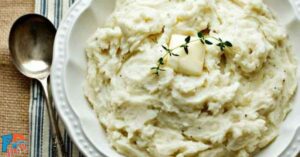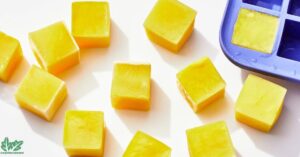Making pastrami pizza at home often results in dry, tough meat or a soggy crust that ruins the entire experience. Many home cooks struggle with the right balance of ingredients and proper cooking techniques. This leads to wasted time, ingredients, and disappointment when trying to recreate this beloved fusion dish.
This comprehensive guide solves these common challenges with proven techniques from professional pizzaiolos and deli experts. Learn the exact methods for selecting the right pastrami cut, preparing the perfect rye crust, and achieving the ideal cooking temperature. Master the art of pastrami pizza and create restaurant-quality results in your own kitchen.
Understanding Pastrami for Pizza (2024)
Pastrami pizza requires careful meat selection for the best results. The meat’s quality directly impacts the pizza’s overall taste and texture. Marbled pastrami contains streaks of fat that melt during cooking, adding rich flavor and preventing dryness. Lean pastrami can become tough and chewy when baked. For the best results, choose brisket-cut pastrami with visible marbling. Request thick-cut slices from your deli, about 1/8 inch thick, to prevent the meat from drying out during baking.
The Art of Pastrami Placement
The placement of pastrami on your pizza affects its final texture and taste. When making pastrami pizza, marbled cuts work best on top of the cheese, allowing the fat to render and flavor the entire pizza. Lean cuts should go under the cheese to stay moist. The high heat of pizza cooking can make pastrami crispy within minutes. Layer the meat evenly across the pizza, avoiding clumps that cook unevenly.
Classic vs Rye Flour Pizza
Dough Creating the perfect base for pastrami pizza starts with the right dough. Traditional pizza dough works well, but rye flour adds authentic deli flavor. Mix one part rye flour with two parts bread flour for the best texture. The dough needs proper hydration – about 65% water to flour ratio. This blend creates a chewy crust that complements the pastrami’s rich taste while maintaining the classic pizza texture.
The Sauce Debate
The sauce choice makes a big difference in pastrami pizza’s final taste. Traditional tomato sauce offers familiar pizza flavor. Stone-ground mustard provides authentic deli taste. A popular option combines both – spread a thin layer of mustard first, then add a light coating of tomato sauce. This combination brings together classic pizza and deli sandwich flavors in one unique dish.
Cheese Selection Guide
Selecting the right cheese transforms a good pastrami pizza into an exceptional one. Swiss cheese offers a nutty flavor that pairs perfectly with pastrami. Provolone adds a sharp taste while maintaining excellent melting properties. For the best results, combine two cheeses – use 70% mozzarella for its melting quality and 30% Swiss or provolone for flavor. This blend ensures your pastrami pizza has both the traditional stringy cheese pull and enhanced taste.
Complementary Toppings
Toppings Pastrami pizza benefits from carefully chosen toppings that enhance its deli-inspired flavor. Thinly sliced dill pickles add tang and crunch. Pat them dry before placing on the pizza to prevent soggy spots. Sauerkraut works well when used sparingly and pre-drained. Red onions and mushrooms complement the meat without overwhelming it. Keep toppings minimal – the pastrami should remain the star.
Step-by-Step Recipe Guide
Equipment Needed
Making pastrami pizza At home requires specific tools for best results. A pizza stone creates even heat distribution and crispy crust. Get a pizza peel with a thin edge for easy sliding. An oven thermometer ensures accurate temperature reading – crucial for perfect crust. These tools help achieve restaurant-quality results. Most items are available at kitchen supply stores or online retailers.
Ingredient Preparation
Precise measurements matter when preparing pastrami pizza ingredients. Use 13 ounces of dough for a 14-inch pizza. Plan on 4-6 ounces of sliced pastrami per pizza. Mix 2 ounces of mustard with 3 ounces of tomato sauce for the perfect hybrid base. Measure cheese at 6-8 ounces total. Pre-portion all ingredients before assembly for smooth preparation.
Assembly Process Building
pastrami pizza requires strategic layering. Start with a well-floured surface and stretch the dough to 14 inches. Spread sauce mixture evenly, leaving a half-inch border. Layer half the cheese, followed by pastrami, then remaining cheese. Add pickles or other toppings last. Press toppings gently into cheese to prevent sliding during baking. Keep layers even for consistent cooking.
Cooking Methods
Indoor Oven Technique
Your home oven can create excellent pastrami pizza with the right approach. Preheat the oven to 475°F with a pizza stone for 30 minutes. Place the pizza on the middle rack for even cooking. Total cooking time runs 16-20 minutes in two stages. First stage: 8 minutes, then rotate. Second stage: 8-12 minutes until cheese melts and crust browns. Let rest for 4 minutes before cutting.
Outdoor Pizza Oven Method
Outdoor pizza ovens transform pastrami pizza with intense heat. Heat oven to 700°F before starting. Cook time reduces to just 4-5 minutes total. Rotate the pizza every 60-75 seconds using the peel. Watch the crust carefully – it can burn quickly at high temperatures. The intense heat creates perfect leopard-spotting on the crust while keeping the pastrami juicy.
Regional Variations
New York Deli Style
Traditional New York pastrami pizza emerged in the 1960s near famous delis. Each borough developed its own style. Manhattan versions use Swiss cheese and mustard sauce. Brooklyn adds mozzarella and tomato sauce. Queens specializes in hybrid versions with both sauces. The Bronx adds pickled vegetables. Local delis often customize their pastrami pizza based on their signature sandwich styles.
Read This Blog: How Big is a 12 inch Pizza: The Complete Size Guide
Modern Interpretations
Contemporary pastrami pizza variations showcase creative innovation. Recent trends include adding caramelized onions and artisanal cheeses. Some versions incorporate bagel-inspired toppings like everything seasoning on the crust. Korean-fusion styles add kimchi instead of sauerkraut. California versions use turkey pastrami and avocado. These modern takes maintain the spirit of pastrami pizza while adding unique flavors.
Also Read This Blog: Monstera Soil Mix Recipe: The Ultimate Guide to Perfect Potting Mix
Temperature Guide Table (2024):
OvenType|Temperature|CookingTime
------------------|HomeOven |475°F |16-20mins
Pizza Stone Oven |500°F |12-15mins
Outdoor Oven |700°F |4-5mins
Expert Tips and Troubleshooting
Common Challenges
Making pastrami pizza at home can face several issues. Uneven oven temperatures lead to undercooked dough or burnt toppings. Sticky dough happens from too much moisture. Too many toppings make the pizza soggy. Fix temperature problems with an oven thermometer. Reduce dough stickiness by adding flour gradually. Keep toppings light – use 4-6 ounces of pastrami per 14-inch pizza.
Pro Tips
Prepare pastrami pizza components in advance for better results. Make dough up to 72 hours ahead and refrigerate. Slice toppings the day before. Store leftover pizza flat in airtight containers for up to 3 days. Reheat at 350°F for 5-7 minutes on a preheated stone. Avoid microwave reheating as it makes the crust tough.
Frequently Asked Question
Can I use turkey pastrami instead of beef?
Yes, turkey pastrami works well. Choose thick-cut slices and place under cheese to prevent drying.
How do I prevent the pastrami from drying out?
Place lean pastrami under cheese. Use thicker slices. Add during the last 5 minutes of baking.
What’s the best cheese to pair with pastrami?
Swiss cheese is traditional. A blend of 70% mozzarella and 30% Swiss offers ideal melt and flavor.
Can I make this in a regular home oven?
Yes, use 475°F with a pizza stone. Expect 16-20 minutes cooking time.
How do I store leftover pastrami pizza?
Store in airtight containers for up to 3 days. Reheat at 350°F for best results.
Conclusion
Pastrami pizza represents the perfect fusion of deli tradition and Italian craftsmanship. Success comes from quality ingredients, proper technique, and attention to detail. Whether using a home oven or professional equipment, the key lies in balancing flavors and textures. This guide provides all necessary tools for creating this unique dish. With practice and these guidelines, anyone can master the art of pastrami pizza making. Remember that experimentation within these parameters leads to your perfect version.











